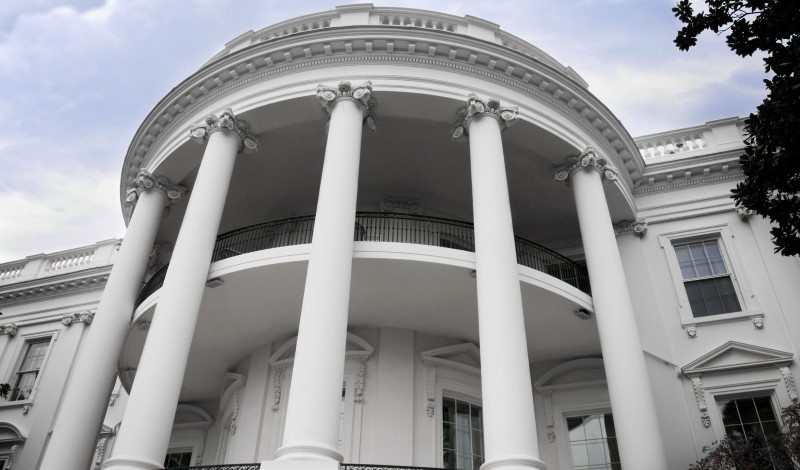
Recent Biden Administration reforms will better prepare the regulatory system to meet society’s challenges.
Last month, the Biden Administration released a landmark set of proposed reforms to the regulatory review process. While the headlines often focus on substantive policy proposals and debates—such as climate change, immigration, and safety net programs—the behind-the-scenes regulatory process is central to how these policies are formulated and shaped.
For all significant regulatory actions, the Office of Information and Regulatory Affairs (OIRA) coordinates a review process in which regulatory actions are evaluated for their underlying policy analysis, and where other components of the White House—notably, West Wing policy staff—and the other departments of the executive branch review the proposed action. OIRA then coordinates the resolution of any disagreements to arrive at a consensus approach to the policy that meets with legal and analytical standards as well as alignment with presidential priorities.
Regulatory review has become a well-established process in the executive branch across administrations of both parties. But at the same time, the regulatory review process has faced a range of important critiques. Scholars and practitioners have challenged the ways in which agencies’ use of cost-benefit analysis might be flawed or poorly attuned to the nuances of policy, especially when it comes to issues like climate change, inequality and more. Others have raised questions about the tensions arising from strong presidential oversight of the regulatory process, balancing the need for coordination and accountability on the one hand with concerns about undue interference with agency expertise and evidence.
Over the last few years, I had the opportunity to serve in the Biden-Harris Administration leading OIRA, during which time the office engaged in the intensive work of reviewing and clearing major regulations across the range of presidential priorities from climate to competition to economic recovery. But during this time, OIRA also began the work of reconsidering the process and technical analytic best practices for regulatory review. The reforms that were ultimately published last month provide a window into how the regulatory review process might be updated to help advance an approach to good governance that is effective, evidence-based, and is up to the task of tackling deeper structural challenges such as inequality or climate. At the same time, these efforts are but one step in a much larger project of reimagining administration and regulatory policy for the years ahead.
In this essay, I highlight several of the most notable interventions contained in the recent reforms.
Process reforms for efficiency and inclusion. One important set of changes are to the process of regulatory review. The President last month issued Executive Order 14,094 which kicked off this regulatory reform effort. The executive order operationalizes some of the directives first put forth in President Biden’s Day One memorandum on “modernizing regulatory review.” In particular, the process reforms implemented by this new executive order are notable, not least because they are now already in effect.
First, Executive Order 14,094 raises the “significance threshold” which triggers the most formal type of OIRA review. This is an important update that will make the review process more timely and efficient, particularly from a capacity standpoint. Agencies—including in White House—have limited staff and time; it is important to focus the most intensive deployment of that person power on the rules and actions that need the most attention. Since President Clinton’s Executive Order 12,866 in 1993, the significance threshold had been set at $100 million, meaning that rules with an estimated impact of over $100 million would require OIRA review and a more thorough regulatory impact analysis to secure clearance for final publication. Yet even as the economy has grown and the real value of such a nominal threshold has changed, this figure has never been updated. As a result, what had initially been a measure aimed at prioritizing intensive investment in analysis and review has over time swept in more actions that have less real-world impact. The new executive order updates this number to $200 million and provides that OIRA will automatically update the threshold every three years, indexed to GDP growth. This process improvement echoes other efforts the Biden Administration has taken to balance analytic and review requirements with the need for speed and efficiency in the policymaking process itself—such as by committing in the spring of 2021 to the rapid review and clearance of regulations implementing the American Rescue Plan, at a time where the pandemic-driven economic freefall was at its worst and relief needed to be delivered as rapidly as possible.
Second, Executive Order 14,094 provides for several interventions that collectively attempt to broaden the regulatory review and policymaking process to be more participatory and inclusive. Most notably, the executive order includes an affirmative call for agencies to be more proactive in engaging impacted communities, particularly from communities historically underserved or overlooked by government. This complements nicely the Administration’s broader emphasis on equity and participation as noted in the President’s recent executive order on equity and as reflected in the Office of Management and Budget’s (OMB) report to the President on equity. In both cases, the call for more proactive outreach and engagement applies, not just to individual regulations but to the more upstream formulation of agency strategies and regulatory agendas, which could lead to more holistic and meaningful engagements. Executive Order 14,094 also tasks agencies with developing greater clarity and structure around how they solicit and respond to petitions from communities for regulatory actions or responses. The executive order also tasks OIRA itself with developing improvements to the notice-and-comment process and to improve its own approach to hearing the views of interested parties. OIRA has already put out a draft guidance for public comment and scheduled a listening session to hear input on how best to improve its own process for hearing from the public.
Improved analysis and evidence. Perhaps the biggest piece of the reform package comes in the realm of regulatory analysis. One of OIRA’s central functions is to review significant regulations for the underlying impact analysis that agencies use to develop and justify their proposals. The current approach to regulatory impact analysis is shaped around OMB Circular A-4, which was issued in 2003 and has not been updated since. OIRA has now proposed a thorough redraft of Circular A-4, and it has put these proposed revisions out for public comment and peer review. There is a great deal in the rewrite, much of it very technical. As I have noted elsewhere, a few central shifts are worth noting up front, as notable changes that also may occasion feedback or recommendations from experts and interested parties during the comment period.
- Agencies are tasked with evaluating the impact of their proposals against a “no-action” baseline. The new Circular A-4 proposal provides for some circumstances where agencies are simply executing a statutory command and have little discretion to employ a “post-statutory” baseline rather than a “pre-statutory” baseline. The upshot of this is that there may be circumstances where agencies have little scope for discretion in a self-executing statute; in those instances, it would not make sense to assume a baseline scenario where the statute does not exist. Rather, the relevant comparison should focus on what the statute requires as a floor and then on comparing the agency’s proposed approach to that statutory floor.
- Global effects. Circular A-4 had always included some mention of global impacts, but the new proposal provides a clearer description of this dimension of impact analysis, tasking agencies with assessing whether there are significant global impacts which would warrant additional discussion on top of the agency’s primary focus on the domestic impacts of rules.
- Uncertainty and risk aversion. There are a number of sections in the proposed new Circular A-4 that update the basic economic theory and analytical best practices to more closely follow developments in the field. One example is its expanded discussion of modeling uncertainty around projected costs, benefits, and other impacts. Another example is its discussion of risk aversion, which would encourage agencies to take better account of how individuals are often likely to value arrangements that protect against future risks.
- Discount rates. One of the most important parameters in regulatory analysis is the discount rate used to compute long-term costs and benefits to allow for an assessment of intergenerational impacts. This is particularly essential in climate regulations. The old Circular A-4 provided for a default discount rate of 3 percent. The new proposal updates the calculation of this parameter, using more recent data to arrive at a 1.7 percent figure. The proposal also seeks comment and input on whether the broader methodology of assessing discount rates should be updated.
- Market competition and business cycles. One challenge with impact analysis is that regulations viewed in a microcosm may miss important broader implications when considering broader economic dynamics. The proposed revision to Circular A-4 includes some expanded guidance on how agencies might consider the impacts of rules on market concentration, market power, and competition. It also provides for a discussion of how the benefits and costs of a rule might be better understood in context of business cycles, where for example a safety net policy might be fruitfully designed to kick into a higher gear during recessions.
- Distributional analysis. While distributional analysis has been included in prior regulatory review directives, including Executive Order 13,563 from the Obama Administration and the original Circular A-4, the new proposed A-4 revisions include much more developed and concrete suggestions for how agencies might go about including distributional analysis. These recommendations include an important, though optional, suggestion for agencies to consider “weighting” of impacts to account for the ways in which benefits or costs impacting working-class Americans may be more important in some instances than those impacting the ultra-wealthy. With these additional tools, it seems possible that agencies could, in the future, be more effective at analyzing distributional impacts and developing policies that take unequal concentrations of burdens or benefits into account more effectively.
- Qualitative and hard-to-quantify impacts. A long-running critique of cost-benefit analysis revolves around the way conventional approaches undercount or overlook qualitative impacts, values, or hard-to-quantify issues, from human dignity and civil liberties. The proposed revision to Circular A-4 includes a much more robust statement that such qualitative and hard-to-quantify impacts are legitimate grounds for justifying regulations and essential for agencies to take into account. The proposal provides some additional tools and approaches agencies might consider in tackling these topics.
A common thread throughout these changes is both modernization and flexibility. The revised Circular A-4 reflects important trends and improvements in social science and evidence; it also provides agencies with more tools and approaches with which to design an appropriate analytical approach to a particular rule. This is especially important for a regulatory apparatus that has to tackle a wide range of social and economic issues, where one-size-fits-all analytic methods are simply not going to be adequate for providing useful, evidence-based foundations for policy design.
Towards the future of the regulatory state. The summary of changes I have offered here is necessarily brief and incomplete. But it provides a sense of what kinds of new possibilities for regulatory policy design may be enabled by the changes the Biden Administration is making. These reforms themselves will depend greatly on feedback and input from the public, including from practitioners and scholars, as OIRA looks to finalize the new Circular A-4 in the coming year.
At the same time, these reforms themselves are part of a much larger and urgent debate about the future of the regulatory state itself. Much about the regulatory state remains in the crosshairs, particularly as recent Supreme Court cases threaten to undercut the capacity of agencies to follow-through on their obligations to address public problems and execute the mandates provided by Congress.
Despite these attacks, it remains the case that a robust, effective, and creative regulatory apparatus will be essential for addressing the challenges the public faces from climate change, inequality, and emerging technologies. The Biden Administration’s recent regulatory reforms represent one modest but significant step towards a regulatory state better equipped to tackle these crises.
By updating the process and the analytical foundations for regulatory analysis and review, the recent reforms can help make the regulatory process more inclusive and can improve the evidence and analytical inputs into policy design. But these reforms should also be read in context of a range of other important efforts to modernize regulation. The Administration has in parallel pursued major initiatives on improving customer experience and service delivery, focusing on high-volume benefits and services that agencies provide to Americans, such as in cases of disaster relief or safety net programs. Similarly, the Administration’s focus on equity has spurred agency-by-agency action plans that aim to improve both policy outcomes and the internal agency process around policy design.
If government is to adequately address the challenges ahead, it will be important for scholars, practitioners, and future policymakers to build on these initial efforts.




